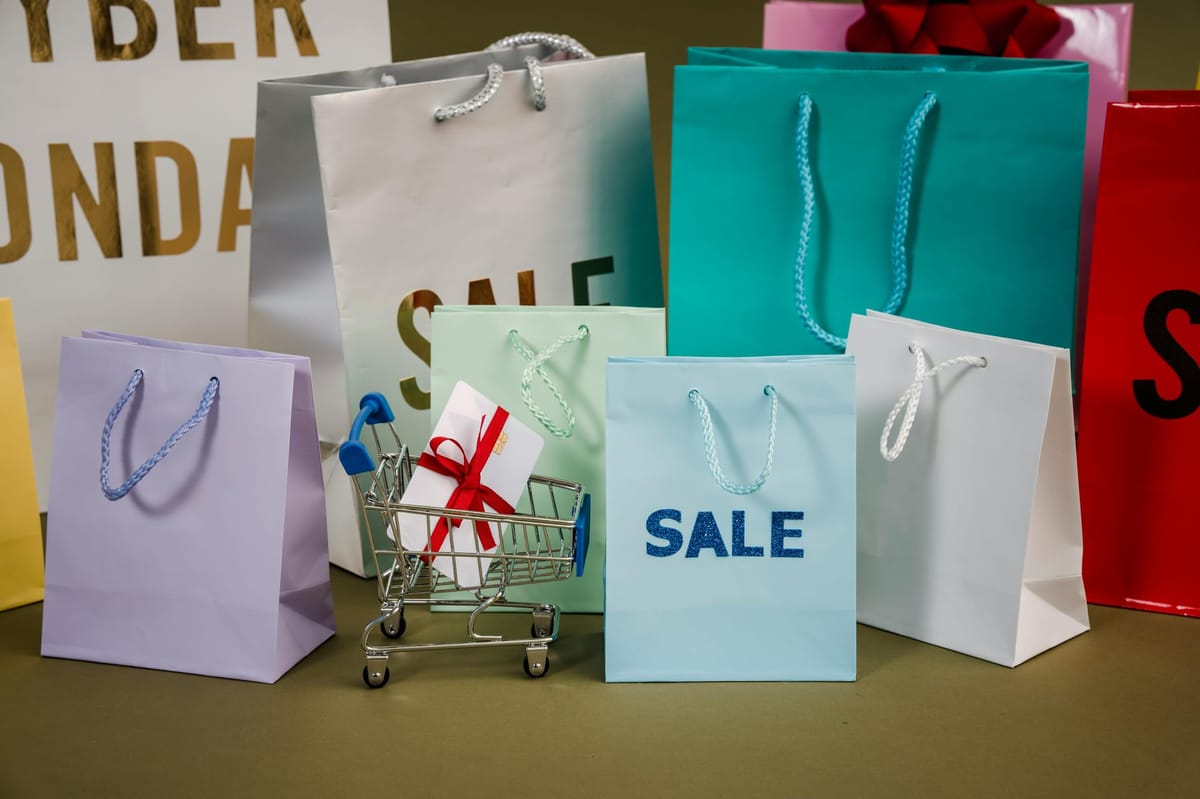5 Ways Bundling Benefits Your Business

Increasing sales doesn't always require complex strategies. Sometimes, the simplest approaches can yield significant results. Bundling is one such straightforward tactic where you group related products and sell them as a package.
It can help clear out slow-moving inventory, introduce new products to customers, and even streamline your inventory management. From small local shops to large online stores, all businesses can benefit from this approach.
In this article, we'll explore five key ways bundling can drive your sales growth and discuss practical strategies to make it work for your business.
What is Bundling?
Bundling is when you combine multiple products or services into a single package deal. It’s a smart way to offer more value and appeal to customers by giving them several items together at a cost usually lower than buying each one separately.
This strategy is flexible and can be beneficial for a variety of businesses, from retail shops to software companies.
As a sales and marketing strategy, bundling is about creating attractive packages that encourage customers to buy more. For instance, an electronics store might bundle a new smartphone with a case and screen protector. This not only increases the sale amount but also ensures the customer has everything they need right away.
From an inventory management perspective, bundling can be a powerful tool. It allows you to:
- Move slow-selling products by pairing them with well-known products
- Simplify stock tracking by treating bundles as single SKUs
- Optimize warehouse space by pre-packaging bundles

However, bundling does come with its own set of challenges. Here are key considerations when creating item bundles:
- SKU Management: Each bundle typically gets its own SKU, which can increase the complexity of your inventory system. You may need to track both the bundle SKU and the individual component SKUs.
- Managing Products from Different Vendors/Locations: If your bundle includes items from multiple suppliers or warehouse locations, you'll need a system to ensure all components are available when fulfilling orders.
- Sales Order Management: Your order processing system needs to be able to handle bundles efficiently. This includes breaking down bundle orders into their component parts for picking and packing, while still treating them as a single unit for billing and customer communication.
Salvador Villarreal, CEO of a cleaning services company, shared with us:
"We offer bundled packages combining dry cleaning, laundry, and alterations at a lower cost than individual services….We also run promotions bundling our services with complimentary product trials. For example, we recently offered free eco-friendly laundry detergent samples with every bundled dry cleaning and laundry order. This promotion encouraged customers to try the detergent and generated a surge of interest in more sustainable cleaning options."
Types of Product Bundles
Understanding the different types of product bundles can help businesses tailor their offerings to meet diverse customer needs and maximize sales potential. Here’s a look at some common bundling types that are popular across various industries:
1. Set Bundles:
These are pre-defined collections of products that are often used together. Set bundles are straightforward and typically offer a fixed discount on the total cost if the items were purchased separately. They're ideal for items that are naturally complementary, like a skincare set that include toner, serum, and lotion.

2. Gift Bundles:
Tailored for gift-giving occasions, these bundles are curated to create a ready-made gift experience. They often include items that are packaged attractively and can appeal to specific demographics or interests, such as a spa day bundle with lotions, soaps, and scented candles.
3. New Product Bundles:
These bundles are designed to promote new products by pairing them with best-sellers. This strategy helps reduce the risk for customers trying a new product and can accelerate the adoption rate by leveraging the popularity of established items.
4. Cross-Sell Bundles:
Cross-sell bundles are curated by pairing products that customers might not necessarily consider together but that complement each other well. An example would be bundling a smartphone with a car charger and a mount, combining convenience and functionality.
5. Clearance Bundles:
Aimed at moving inventory quickly, clearance bundles slow-selling items at a reduced price. This approach helps clear out inventory and offers customers a bargain, making it a win-win situation.
6. Seasonal Bundles:
These are curated based on the time of year or a specific holiday. For example, a winter bundle might include gloves, a scarf, and a beanie. Seasonal bundles are excellent for aligning with customer needs during peak shopping times.

7. BOGO Bundles (Buy One, Get One):
A popular promotional tactic, BOGO offers allow customers to buy one item and receive another for free or at a significantly reduced price. This type of bundle can quickly draw customer interest and boost sales volumes.
8. DIY Bundles: Customizable Product Combinations
DIY bundles allow customers to personalize their package by choosing from a selection of items to create a bundle that best meets their needs. This type of bundling is particularly effective because it gives customers the freedom to pick products they prefer, ensuring higher satisfaction and engagement.

The Top 5 Benefits of Bundling
Let's take a look at the benefits bundling brings for your business.
1. Increase Average Order Value (AOV)
Average Order Value (AOV) is a crucial metric in e-commerce and retail that measures the average amount a customer spends per transaction.
It's a valuable indicator of customer purchasing behavior and can be used to assess the effectiveness of marketing strategies, pricing, and product offerings. Here's why it works:
- Cross-selling Compatible Products: By combining related items, like pairing a laptop with a matching bag and wireless mouse, bundling taps into a customer's existing needs and encourages additional purchases.
- Higher Sales Volume and Revenue per Customer: Even if items in a bundle are discounted, the total sale value often exceeds what would have been spent on a single item. Customers perceive bundled offers as better value, leading to higher spending per transaction.
- Psychological Appeal: The perception of getting a good deal can significantly enhance customer satisfaction and loyalty. Bundles that appear to save money, even if the savings are modest, are more attractive and can drive repeated business.

2. Clear Slow-moving Inventory
Bundling is an effective strategy for managing inventory, particularly when it comes to clearing slow-moving or excess stock. This benefit addresses a common challenge many businesses face: what to do with items that aren't selling as quickly as anticipated. Here's how bundling helps clear inventory:
- Eliminating Overstock: By incorporating slow-moving products into attractive bundles, you can move these items more quickly. This helps free up valuable warehouse space and lowers the costs associated with holding excess inventory.
- Pairing Weak Products with Top Sellers: One of the most effective bundling strategies is to combine less popular items with your best-selling products. This approach benefits from the appeal of your top sellers to move the slower items. Customers who are primarily interested in the popular product may see the additional items as a bonus, making the bundle more attractive.
- Reducing Dead Stock: Dead stock refers to inventory that hasn't sold in a long time and is unlikely to sell in the future. Bundling can breathe new life into these items by making them part of a more appealing package.
- Seasonal Clearance: For seasonal products, bundling can be particularly useful as the season comes to an end. By creating themed bundles, you can clear out seasonal inventory before it becomes completely out of date.
3. More Convenience for Customers
Bundling offers significant advantages to customers, primarily in the form of increased convenience. Here's how:
- One-Stop Shopping: Bundles allow customers to purchase multiple related items in a single transaction. This saves time and reduces the effort required to shop for individual components separately.
- Decision Simplification: For customers who may be overwhelmed by choices or unsure about which complementary products to buy, bundles offer a ready-made solution. This is particularly helpful for newcomers or even busy shoppers.
- Value Perception: Bundles often come with a price advantage compared to buying items individually. This perceived value adds to the convenience factor, as customers feel they're getting a better deal without having to hunt for discounts.
- Product Discovery: Bundles can introduce customers to new products they might not have considered otherwise. This exposure to complementary items can enhance their overall product experience.

4. Improve Inventory Management
Bundling isn't just a sales tactic; it's also a powerful tool for streamlining inventory management. By grouping products together, you can simplify your stock-keeping processes and improve overall efficiency.
One of the primary ways bundling enhances inventory management is by reducing the number of individual SKUs (Stock Keeping Units). When you create a bundle, you're essentially treating multiple items as a single unit.
Bundling also helps in forecasting and planning. When you know that certain items are frequently sold together as a bundle, it becomes easier to predict demand and plan your inventory purchases accordingly. This can lead to more accurate stock levels, reducing both overstocking and stockouts.
5. Promote New Products
Bundling serves as an excellent strategy for introducing new products to your customer base. By pairing new items with established bestsellers, you can generate interest and boost initial sales of your latest offerings.
When new products are bundled with familiar items, the perceived risk of purchasing them is lower. Customers are more likely to try something new if it comes alongside products they already trust and value.
Bundles can serve as an incentive for customers to experiment with new products they might not have purchased otherwise. This trial can lead to increased acceptance and demand for the new products as part of their regular buying habits.
For seasonal or trendy items, bundling can be particularly effective. It allows you to capitalize on current market trends by quickly introducing new products alongside complementary, well-known items.

Conclusion
Product bundling can really kick your sales into high gear and boost your profits. By grouping products into attractive packages, you can encourage customers to buy more in one go, which helps increase your average order value.
It’s also a smart way to move items that aren’t selling as quickly by pairing them with your bestsellers, balancing your inventory and freeing up resources. Plus, it makes shopping easier and more appealing for your customers, which can lead to greater satisfaction and repeat business.
If you’re looking to get the most out of product bundling, give BoxHero’s inventory management solution a try. It helps you set up bundles easily and keeps your inventory in check with features like barcode scanning, inventory counts, and more.



